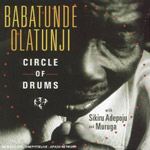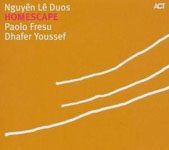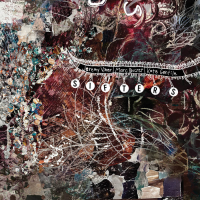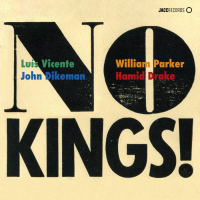Home » Jazz Articles » Album Review » Babatunde Olatunji: Circle of Drums
Babatunde Olatunji: Circle of Drums
To the essentially music-historical factors listed above, Olatunji would add geopolitical unity and New Age-inspired spirituality, very much in evidence in the packaging, and to a lesser extent in the music on this record. But is there any inherently musical interest to Circle of Drums? After all, seen from a jazz perspective, the musical project of this record is essentially dressing up a beat. Which, for a musical form that reveres Max Roach and Elvin Jones, means that this is a project of potentially enormous musical interest.
The best passages on this recording are built around the interplay among Olatunji, long-time associate Sikiru Adepoju and Serbian drummer Muruga Booker, based on a set of fairly simple rhythmic ideas. The tempos tend toward the loping middle range, not so different from that of the resting heartbeat. The very names of the drums are evocative, but they are sonically heterogeneous as well: the mix of metal, wood, animal hide and other materials means that there is considerable variation in pitch and timbre. The opening "Stepping (Isise)" and "Incantations" (which derives its drone from the one-string Indian ektar of James Gurley) introduce the interlocking rhythms and the empathetic improvisation of the group.
The record sags a little toward the middle. "Dawn (Idaji)" disappoints not so much because of the synthesizer wash that suffuses it, but because of Booker's unimaginative rock 'n' roll drumming; "Embracement" falters because Harry Ely's unfocused noodling on the hammered dulcimer never quite coalesces with the percussion ensemble.
The twenty-minute-plus "Cosmic Rhythm Vibrations" that closes the record entirely redeems the project. Taken at a slower tempo (at least initially) than the rest of the record, this veritable drum concerto allows more space for flourishes and the establishment of counter-rhythms, which surge and subside hypnotically. Listen to it while running, or while lying down, eyes closed: your ear will become attuned to the tonal variety of the instruments, your intellect will be engaged by the surprisingly broad expressiveness of the piece, and your soul will be gradually overcome by the trance-inducing qualities for which drumming circles are renowned.
Track Listing
Stepping (Isise); Incantations; Dawn (Idaji); Embracement; Ascension (Igoke); Cosmic Rhythmic Vibrations.
Personnel
Babatunde Olatunji
drumsBabatunde Olatunji: ashiko, djembe, ngoma drums, vocals; Sikiru Adepoju: gudugudu, shekere, talking drum, cowbell, clay drums; Muruga: nada drum, drum set, large floor tom, synthesizer; James Gurley: ektar; Shakti: female vocals; Harry Ely: hammered dulcimer.
Album information
Title: Circle of Drums | Year Released: 2006 | Record Label: Chesky Records
Tags
PREVIOUS / NEXT
Support All About Jazz
 All About Jazz has been a pillar of jazz since 1995, championing it as an art form and, more importantly, supporting the musicians who make it. Our enduring commitment has made "AAJ" one of the most culturally important websites of its kind, read by hundreds of thousands of fans, musicians and industry figures every month.
All About Jazz has been a pillar of jazz since 1995, championing it as an art form and, more importantly, supporting the musicians who make it. Our enduring commitment has made "AAJ" one of the most culturally important websites of its kind, read by hundreds of thousands of fans, musicians and industry figures every month.



















